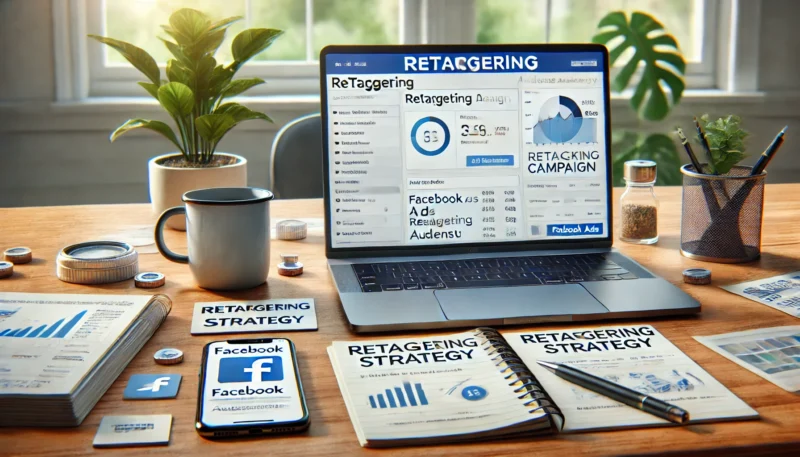Most people don’t buy the first time they visit your site. In fact, research shows that up to 98% of visitors leave without converting. That’s where retargeting comes in — a strategy designed to bring those visitors back and turn them into customers.
In this article, you’ll learn what retargeting is, how it works across different platforms, and how to use it effectively in your paid traffic strategy.
What Is Retargeting?
Retargeting (also called remarketing) is a form of online advertising that targets users who have previously interacted with your website, app, or content — but didn’t convert.
By showing personalized ads to this warm audience, you increase your chances of:
-
Regaining their attention
-
Building trust over time
-
Guiding them to complete an action (purchase, signup, etc.)
How Retargeting Works
When someone visits your site, a tracking pixel (small piece of code) is triggered and drops a cookie in their browser.
That cookie allows you to:
-
Follow them across the web
-
Serve relevant ads based on their behavior
-
Stay top of mind while they browse other sites or social platforms
Types of Retargeting Ads
1. Pixel-Based Retargeting
-
Triggered by specific page visits
-
Shown across display networks or social media
-
Highly scalable and fast to deploy
✅ Example: A visitor browses your product page → Later sees your ad on YouTube or Facebook
2. List-Based Retargeting
-
You upload a list of contacts (emails or phone numbers)
-
Ads are shown only to those users on platforms like Facebook or Google
✅ Best for: Email subscribers, past customers, or leads
Where You Can Run Retargeting Campaigns
-
Google Display Network
-
Google Search (RLSA – Remarketing Lists for Search Ads)
-
YouTube Ads
-
Facebook & Instagram Ads
-
LinkedIn Ads
-
Twitter/X Ads
-
TikTok Ads
Each platform has its own tracking setup — Facebook Pixel, Google Tag, etc.
Benefits of Retargeting
✅ Stay Top of Mind
People rarely convert on their first visit. Retargeting keeps your brand visible and reinforces your message.
✅ Increase Conversions
By re-engaging warm leads, you can dramatically boost conversion rates without targeting cold audiences again.
✅ Improve ROI of Ad Spend
You’ve already paid to bring these users in — retargeting maximizes the return on that investment.
✅ Personalize the Experience
Show ads based on behavior:
-
Products viewed
-
Cart abandoned
-
Pages read
-
Actions taken (or not taken)
Retargeting Use Cases (With Examples)
🛒 Cart Abandonment
-
Ad: “Still thinking it over? Here’s 10% off – just for you!”
📚 Content-Based Retargeting
-
Ad: “Read our guide on SEO? Here’s a free checklist to help you take action.”
🧲 Lead Magnet to Product
-
Ad: “Thanks for downloading our eBook — ready for the full SEO course?”
🎯 Repeat Purchases
-
Ad: “Back in stock! Get your favorite product before it’s gone again.”
Retargeting Best Practices
1. Segment Your Audiences
Don’t treat all past visitors the same. Create separate ads for:
-
Blog readers
-
Product viewers
-
Abandoned cart users
-
Past customers
-
Email subscribers
2. Set Frequency Caps
Avoid annoying users by showing your ad too many times.
✅ Recommended: 3–5 impressions per user per day max
3. Use Fresh, Relevant Creative
Change up your ads to prevent ad fatigue and banner blindness.
✅ Rotate visuals and messaging every 2–4 weeks.
4. Offer Value or Incentive
Give them a reason to come back:
-
Discounts
-
Free shipping
-
Bonus content
-
Personalized offers
5. Match the Message to Their Action
Make your ad contextual and specific.
✅ Example: “Still researching SEO tools? Here’s a side-by-side comparison to help you decide.”
6. Add Exclusions
Exclude users who:
-
Already purchased
-
Already signed up
-
Visited very briefly (bounced)
This helps focus budget on the most qualified users.
Tools for Retargeting Setup
-
Meta Pixel (Facebook/Instagram)
-
Google Ads Remarketing Tag
-
LinkedIn Insight Tag
-
TikTok Pixel
-
Pinterest Tag
-
AdRoll, Criteo, or other 3rd party tools
✅ Use Google Tag Manager to simplify tag implementation across platforms.
Final Thoughts: Retargeting Is Smart Marketing
If you’re spending money on traffic — don’t let it go to waste. Retargeting helps you capitalize on attention you’ve already earned, while guiding users through the decision-making process.
Done right, it feels helpful, not pushy. And in 2025, it remains one of the most cost-effective ways to boost conversions across every stage of your funnel.

